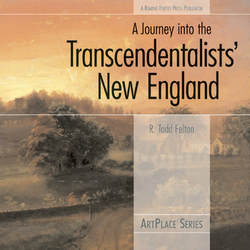Читать книгу A Journey Into the Transcendentalists' New England - R. Todd Felton - Страница 16
На сайте Литреса книга снята с продажи.
The Right Time: The Historical Context
ОглавлениеAlthough Emerson warned against endlessly searching “among the dry bones of the past” for humanity’s place in the universe, it is impossible to come to an understanding of Transcendentalism without taking into account its historical context. The chaotic changes during the first half of the nineteenth century greatly influenced the ideas of the Transcendentalists. The population of the United States was approaching twenty million by the middle of the century, and, with the exception of the financial panic of 1837, which closed the stock market for ten days, the economy continued to grow right up to the Civil War.
Inspired in many ways by the preaching of the Reverend William Ellery Channing, Boston—and indeed all of New England—was abandoning the orthodoxy of Calvinism in favor of the more rational and liberal Unitarianism. This dramatic shift confused and discomfited many New Englanders. Combined with economic prosperity, however, it fostered a social and cultural awareness that bolstered liberal causes such as abolition, education, and women’s suffrage, as well as such innovations as athenaeums and lyceums, which were important cultural institutions in early-nineteenth-century America. It was due in large part to the prevalence of these social organizations that the Transcendentalists enjoyed the modest financial successes they did (Emerson, for instance, made much of his money on the lecture circuit), and it was due in large part to the fresh perspectives of the Transcendentalists that these social organizations flourished in nineteenth-century America.
The success of the movement also owed a great deal to the increasing financial stability of antebellum New England. Boston was coming into its own as a shipping port, and the industrial revolution was bringing manufacturing to New England. Great wealth was flowing into the port cities of Boston, Salem, and New York. With the 1826 opening of the first railroad in Quincy, just south of Boston, and the doubling of the industrial output of the United States between 1840 and 1850, the sleepy market villages of New England became suburbs and mill towns.
The untamed wilderness frontiers moved farther west, and the undeveloped lands of New England were no longer the dark, dangerous places they had been for the Puritans eking out their existence in the hills of Massachusetts. Instead, the wild lands were now viewed increasingly as sources of inspiration and proof of the unity of the Spiritual with the Natural.
The years between the War of 1812 and the Civil War, while a time of great economic prosperity for New England, were also turbulent and occasionally violent. The issue of slavery and its expansion into the newly settled territories was never far from many people’s minds as they struggled to reconcile their understanding of the past with an unclear American future. For many, the use of slaves underscored the differences between the agrarian South and the more industrial North.
